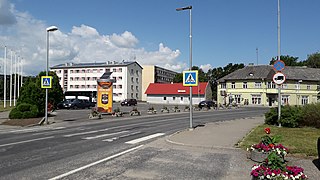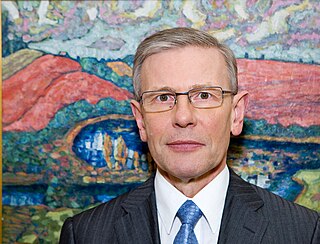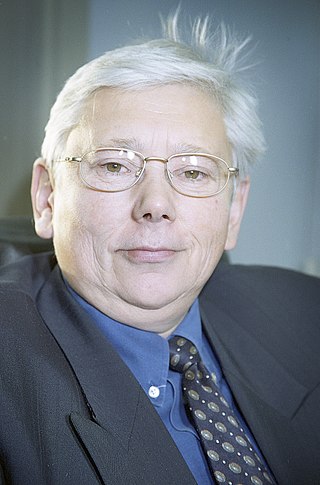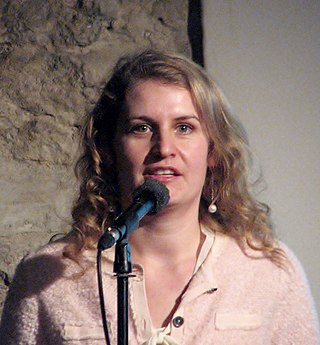Teet Veispak | |
|---|---|
 Teet Veispak in 2001 | |
| Born | September 25, 1955 |
| Nationality | Estonian |
| Occupation | Historian |
Teet Veispak (born September 25, 1955) is an Estonian historian and cultural figure. [1] [2] [3]
Teet Veispak | |
|---|---|
 Teet Veispak in 2001 | |
| Born | September 25, 1955 |
| Nationality | Estonian |
| Occupation | Historian |
Teet Veispak (born September 25, 1955) is an Estonian historian and cultural figure. [1] [2] [3]
Veispak graduated from Tartu State University's Faculty of History in 1979. [1]
Veispak worked as a researcher and the director of the Institute of History of the Academy of Sciences of the Estonian SSR, [1] [2] as a researcher, an exhibition organizer, and the research director of the Rakvere Museum , [4] and as the curator of exhibitions at the Kalame Farm Museum of Virumaa Museums . [5]

Tapa is a town in Tapa Parish, Lääne-Viru County, Estonia, located at the junction of the country's Tallinn–Narva (west–east) and Tallinn–Tartu–Valga (north–south) railway lines. Tapa has the Estonian Defense Forces nearby Keskpolügoon. The Valgejõgi River passes Tapa on its northeastern side. Tapa has been known as both a railway and a military town throughout its history.

Rakvere is a town in northern Estonia and the administrative centre of Lääne-Viru County, 20 km south of the Gulf of Finland of the Baltic Sea. Rakvere is the 8th most populous urban area in Estonia. Rakvere has a total area of 10.75 square kilometres, and although about 15% of Rakvere is covered by forest, it is still the country's third most densely populated urban area. From the 13th century until the early 20th century, Rakvere was more widely known by its historical German name, Wesenberg(h).

Kunda is a town in the Viru-Nigula Parish of Estonia, located on the coast of the Gulf of Finland. Kunda is best known for its cement factory, port, and archaeological heritage.
The Estonian Academy of Music and Theatre began as a mixed choir of the Estonia Society Musical Department (EMD) on the eve of World War I. The assembly of the Estonia Society created the Tallinn Higher Music School on November 17, 1918. The opening ceremony took place on September 28, 1919. In 1923 the educational institution was renamed the Tallinn Conservatoire. In 1938 the State Drama School was opened. In 1993 the school was renamed the Estonian Academy of Music. In 1995 the Drama Faculty was renamed the Higher Theatre School.

Arnold Akberg was an Estonian painter.

Leonhard Lapin, also known under the pseudonym Albert Trapeež, was an Estonian architect, artist, architecture historian, and poet.
The Phosphorite War is the name given to a late-1980s environmental campaign in the then-Estonian Soviet Socialist Republic, against the opening of large phosphorite mines in the Virumaa region. The movement, peaking in 1987, was successful in achieving its immediate goals, but also in encouraging and strengthening the nationalist movement which led to the restoration of Estonian independence in 1991. In Estonia it is regarded as a catalyst that led to the destabilization and dissolution of the Soviet government in Estonia.

Enn Kunila is an Estonian entrepreneur and art collector.

Indrek Saar is an Estonian actor and politician. He has been the leader of the Social Democratic Party from 2019 to 2022 and the Minister of Culture of Estonia from 2015 to 2019.

Jaan Kalviste was an Estonian chemist, mineralogist, educator, and translator.

Ants Leemets was an Estonian politician and museum director who served as Minister without Portfolio and later as Deputy Mayor of Tallinn.

Patarei Prison, also known as Patarei Sea Fortress and Tallinn Central Prison, commonly known as The Battery (Patarei), is a building complex in Kalamaja district of Tallinn, Estonia. The premises cover approximately four hectares of a former sea fortress and prison, located on the shore of Tallinn Bay.

Electoral district no. 6 is one of the 12 multi-member electoral districts of the Riigikogu, the national legislature of Estonia. The district was established in 2003 when the existing electoral district no. 6 was split into two. It is conterminous with the county of Lääne-Viru. The district currently elects five of the 101 members of the Riigikogu using the open party-list proportional representation electoral system. At the 2019 parliamentary election it had 44,583 registered electors.
Valter Krimm was an Estonian politician. He was a member of Estonian National Assembly.
Liisa Aibel is an Estonian stage, film and television actress.
Jaan Kurn was an Estonian teacher, poet, and translator.

Enn Tarvel was an Estonian historian.

Mari Uusküla is an Estonian linguist.
Raoul Kernumees was an Estonian printmaker and painter.
Erich Leps was an Estonian painter.